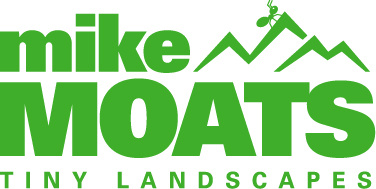After a few years photographing landscapes, I found my calling, passion, and career as a macro photographer. It wasn’t my intentions to shoot macro as my interest in my new hobby in the beginning was to be a landscape photographer. I had studied all the great landscape images that were printed on the pages of “Outdoor Photographer” and decided that was what I wanted to shoot. With my limited time and budget to travel to the national parks where the best landscapes were, and only two weeks a year of vacation, it didn’t satisfy my desire and left me with fifty weeks of mundane landscape opportunities in the northern suburbs of Detroit. I wanted to get outdoors and shoot something, so I decided to look into macro, which gave me more subject matter though out the year during the times I wasn’t able to travel. It didn’t take long before I realized how much fun macro was with all the great artwork that Mother Nature provided to photograph. I began to realize all of the benefits of being a macro photographer, and decided to dedicated all of my time to macro, and I no longer shoot landscapes.
You don’t have to travel far as macro subjects are everywhere. You can find it at the local parks, in your own yard, and even shoot inside your home. I have four great parks within twenty minutes of my home, and probably seventy percent of my best images are photographed in those parks. I also have a few of my best selling images that were shot in my backyard. Most people have flower gardens in their yard, so they can walk outside their home and shoot. This close convenience saves on the high cost of fuel and wear and tear on our vehicles, and saves on time as we can shoot when we just have an hour or two available. In the winter here in Michigan I do most of my shooting indoors, so I buy flower from the local florist, go online to websites that sell feathers, mounted butterflies, sea shells, slab agates, which all can be arranged into artistic compositions.
You can shoot with just one lens. You don’t need a whole arsenal of lenses for macro photography, I got by with one lens for seven years before I added on to my stable of lenses. I shot for those first seven years using a macro lens in the 180mm range. If you are starting out as a macro photographer and limited on funds, a mid range focal length lens like the Tamron 90mm will work great for all purposes. If you plan to shoot live subjects such as butterflies, dragonflies, and other small critters that will flee as you approach to close, go with the longer focal length lens 180mm. If you like to handhold your camera, try the light and fast shooting Tamron 60mm macro lens. For macro photography plan on shooting the majority of your shots with your camera mounted on a good study tripod and ballhead.
Subject matter changes every month. With the four seasons, we have an ever-changing environment month by month and sometimes day by day. I can revisit the same areas every couple weeks and find new subjects. It’s a constant cycle evolving from life to death. Depending on where you live, your seasons may vary and the environment may be totally different from the rest of the country. Learn about the subjects and life cycles of the plants and critters in your area, and make sure you are in the field when subjects come into season.
Shoot any time of day. Landscape and wildlife photographers have limited control over lighting and tend to shoot early morning and late evening which offers the best light. Because of the small subjects macro photographers work with, we have the ability to control our light by using diffusers and reflectors, so we can shoot any time of the day. I carry a 12” diffuser which I use to control harsh overhead light or sunlight from hitting my subjects, and a 12” silver/gold reflector for bouncing light into shaded areas of a subject.
More Creativity. One of the challenges as a macro photographer is working with depth of field. Because we are shooting very close to our subjects, the depth of field is very shallow causing lots of out of focus areas in our photos. The closer we get to the subject, the less that will be in focus. We can use this shallow depth of field to our advantage in creating artistic compositions. If you like soft focus dream like images, shoot in the lower f/stop range, and use this shallow depth of field to produce some beautiful artwork. If you have a subject that may have some interesting lines or textures that you may what to show off, you can set your f/stop in the highest numbers and bring everything into focus. So we have the ability to get everything in focus and also use the shallow depth of field to be more creative.
Your own personal art. Your own personal art is one of my favorite benefits. Every image that you view on my website is an original. They are subjects that were present for only a brief moment in time, until the environment erased them forever. None of the images that I have can be reproduced again because the subjects do not exists anymore. Mountains, rivers, lakes, are all there day after day and can be photographed over and over by many, many photographers, but my subjects have been eliminated by Mother Nature and are images that I can call my own originals.
Each year more and more nature photographers discover the benefits of macro. Take some time and explore all the local parks and your own backyard and enjoy the fun of macro photography.

